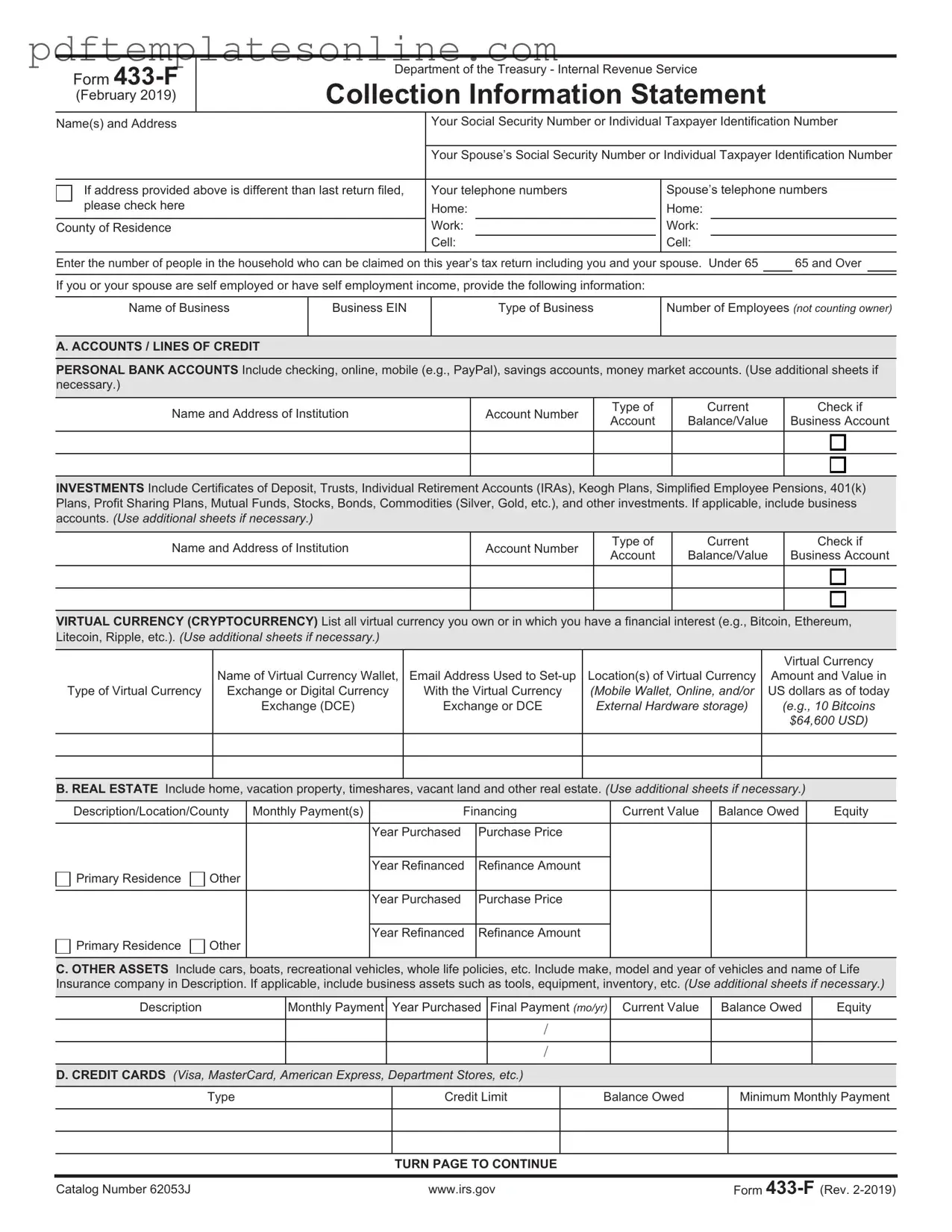Filling out the IRS 433-F form can be a daunting task, and many people make common mistakes that can lead to complications. One frequent error is not providing accurate personal information. Ensure that your name, address, and Social Security number are correct. Even a small typo can cause delays in processing your form.
Another common mistake is failing to report all income sources. It’s essential to include all forms of income, such as wages, self-employment earnings, and rental income. Omitting any income can lead to discrepancies and may raise red flags with the IRS.
Many individuals also underestimate their expenses. When listing monthly expenses, it’s important to be thorough and realistic. Some people forget to include necessary costs, such as medical expenses or childcare, which can affect the overall assessment of their financial situation.
Inaccurate asset reporting is another area where mistakes often occur. When detailing assets, be sure to include all bank accounts, real estate, and vehicles. Failing to disclose assets or undervaluing them can lead to complications during the review process.
People sometimes neglect to sign and date the form. A missing signature can result in the form being considered incomplete. Always double-check that you have signed and dated the document before submission.
Providing incomplete or vague descriptions of your financial situation can hinder the process. Be clear and specific about your circumstances. This helps the IRS understand your situation better and can expedite the review.
Another mistake is not keeping copies of the submitted form. Always retain a copy for your records. This can be crucial if any questions arise later about your submission.
Some individuals also fail to follow up after submitting the form. It’s important to monitor the status of your submission. If you don’t hear back within a reasonable timeframe, consider contacting the IRS for an update.
Lastly, many people do not seek assistance when needed. If you’re unsure about any part of the form, consulting with a tax professional can provide clarity and help avoid costly mistakes.
